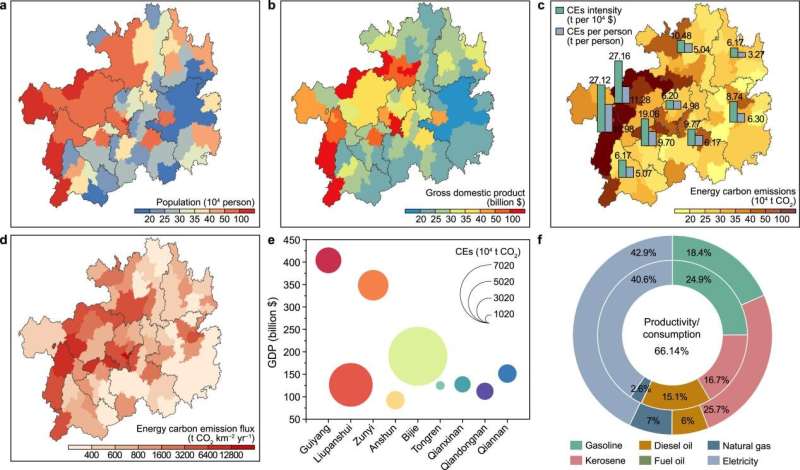This article has been reviewed according to Science X's editorial process and policies. Editors have highlighted the following attributes while ensuring the content's credibility:
fact-checked
proofread
New model accurately evaluates carbon neutrality capacity

In a new study published in the journal Environmental Science and Ecotechnology, researchers from the Chinese Academy of Sciences (Guiyang), reveal a new model for accurately evaluating carbon neutrality capacity. The Carbon Neutrality Capacity Index (CNCI) model evaluates contributions from various carbon sinks, providing vital data for climate change policy development and emission reduction strategies.
The study utilized a variety of advanced analytical methods to construct the CNCI model, with a key innovation being the inclusion of carbonate and silicate rock chemical weathering as carbon sinks, an area often overlooked in carbon neutrality assessments. In addition to this, the model also evaluated the vegetation–soil ecosystem as a carbon sink.
The results show that Guizhou has a CNCI of 57%, significantly higher than both China's average (11.88%) and the global average (27.14%). Furthermore, regions within Guizhou, such as Libo and Pingtang, showed surpluses, with CNCIs as high as 643% and 581%, respectively.
These results highlight the region's potential to make a substantial contribution toward China's carbon neutrality goal. The study concludes by emphasizing the critical role rock weathering carbon sinks play in evaluating the CNC of terrestrial ecosystems. It also proposes the CNCI model as an efficient and applicable tool for comprehensive and systematic analysis of carbon neutrality, both at a national and global level.
In the long term, the findings of this study could play a pivotal role in accelerating progress towards global carbon neutrality, a goal of significant importance in tackling climate change. The researchers hope that the findings of this study will provide valuable insights for scientists, policymakers, and climate activists around the globe.
More information: Xiaoyong Bai et al, A carbon-neutrality-capacity index for evaluating carbon sink contributions, Environmental Science and Ecotechnology (2023). DOI: 10.1016/j.ese.2023.100237
Provided by TranSpread




















